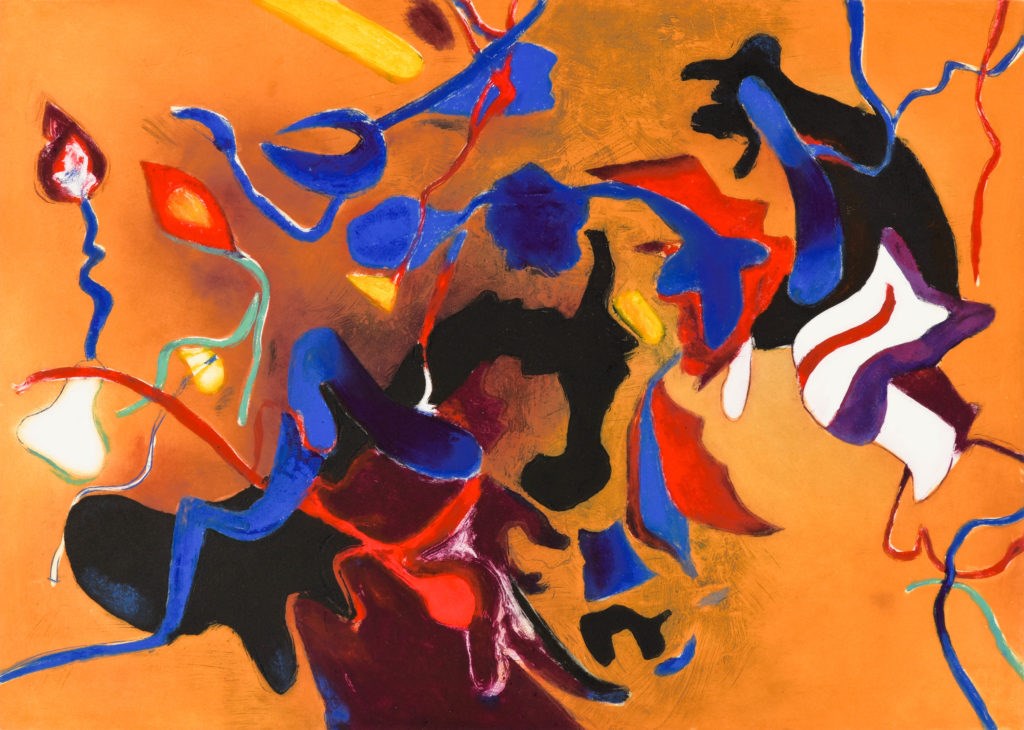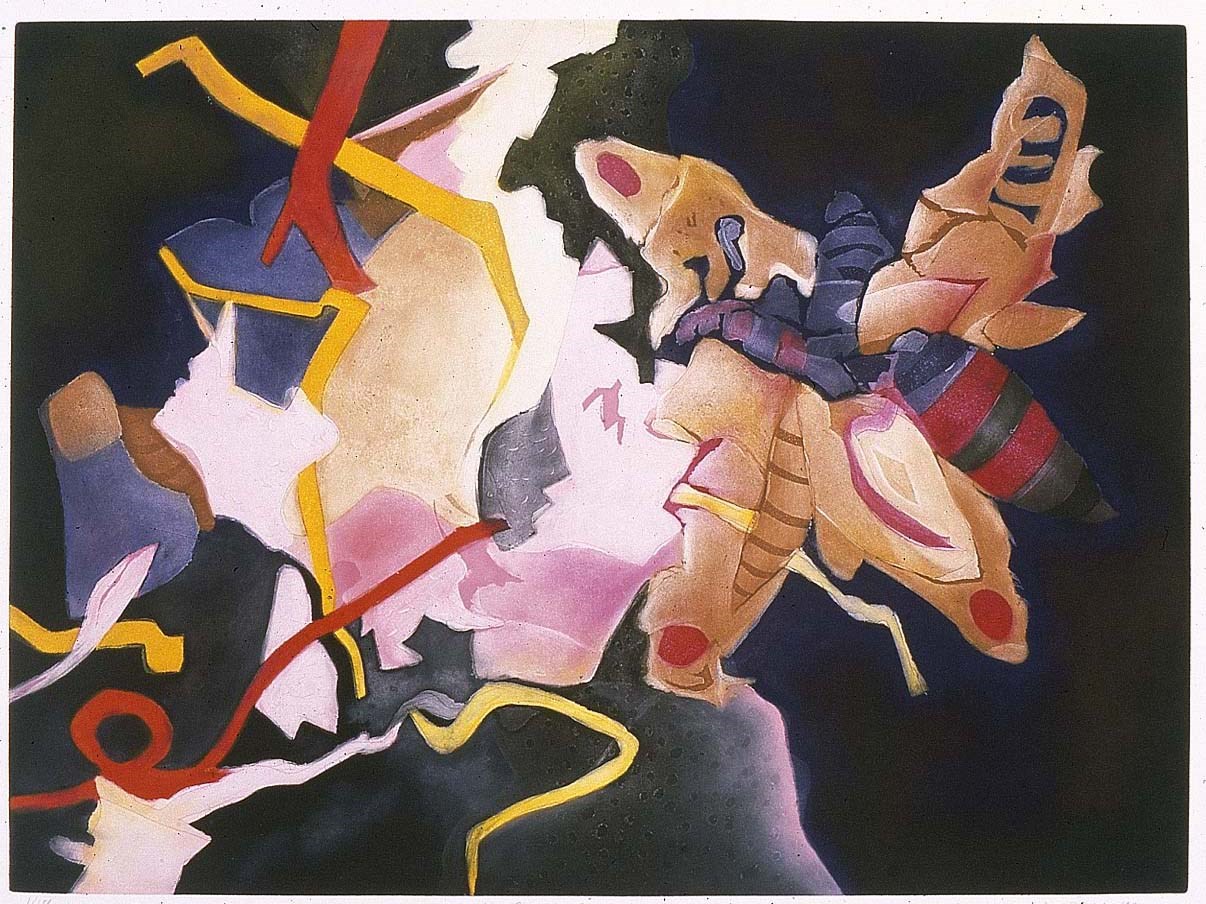Jack Shadbolt was born in England in 1909 and came to Canada with his
parents in 1912. From 1928 to 1937, he taught in high schools in Duncan
and Vancouver, B.C. while attending night classes under Frederick Varley
at the Vancouver School of Art (V.S.A.). Shadbolt wrote and published
three books: In Search of Form, Mind’s I, and Act of Art. In 1988, with
Doris Shadbolt, he established VIVA, a foundation granting awards to
visual artists in British Columbia. He received the Guggenheim Award in
1957, the Molson Prize in 1977, and Gershon Iskowitz Award in 1990.
Also, he was awarded Honorary Degrees from four universities, and the
Order of Canada. In 1989, he was made Freeman of the City of Vancouver.
Shadbolt represented Canada in international exhibitions around the
world, and exhibited in all major public galleries across Canada for 60
years. His works are represented in all major galleries across Canada,
including the National Gallery of Canada, and in many private and
corporate collections. Bau-Xi Gallery represented Shadbolt with 44 solo
exhibitions in its Vancouver and Toronto locations since 1970.
Jardin Noir, 1994
suite of four, lithograph, ed. 150
full bleed: 36” x 27”
Sold out

Garden in Flux, 1993
eighteen-colour etching, ed. 99
image: 23.75” x 33.5”
paper: 31.5” x 42.5”
Sold out
Lithography, or writing on stone is based on the resistance between
grease and water. The artist uses drawing and painting materials
containing grease on a limestone slab or aluminum plate to create an
image. A gum arabic mixture is applied to the composition to securely
bond the image to the plate. The surface is then dampened with water
which adheres to the non-greasy areas. Ink is applied and only adheres
to the greasy sections. Areas covered with water remain blank. The plate
is then run through a press under extreme pressure. Lithograph prints
are characterized by soft lines and rich textures.
Etching is an example of intaglio. Intaglio derives its name from the
Italian intagliare, meaning to incise. Copper or zinc plates have a
waxy ground applied to them, and an incising tool called a scribe is
used to penetrate the ground. The plate is immersed in an acid bath,
where the acid bites into the incised lines to emphasize them. When the
plate is ready for inking, the ground is removed and the entire plate is
covered in ink. The plate is then wiped clean on the surface and
printed on damp paper, where the paper is forced into the etched lines
and picks up the remaining ink, resulting in an image.

Night Transformations, 1997
ten-colour etching, ed. 100
30.5” x 38.5”
Sold out
Shore Image, 1998
twelve-colour intaglio, ed. 100
30.5” x 38.5”
Sold out